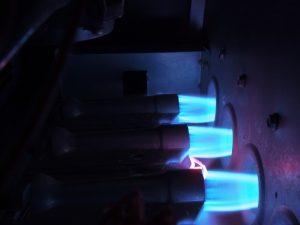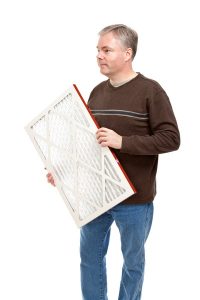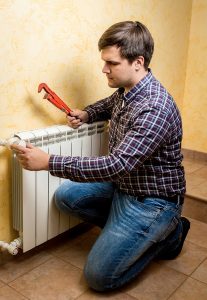 Wintertime is the time of year when our heating systems are truly put to the test. Because of the strain they go through this time of year versus in milder weather, it tends to be when problems arise. Since you need your system to function at its best this time of year, this is obviously not ideal. It pays to ensure you schedule routine maintenance each year, and to keep a watch for signs of trouble with your heater.
Wintertime is the time of year when our heating systems are truly put to the test. Because of the strain they go through this time of year versus in milder weather, it tends to be when problems arise. Since you need your system to function at its best this time of year, this is obviously not ideal. It pays to ensure you schedule routine maintenance each year, and to keep a watch for signs of trouble with your heater.
There are few furnace problems more insidious than that of a cracked heat exchanger. If your furnace shows signs of this problem, it’s likely that it needs to be replaced altogether, as this tends to only happen in older furnaces. Repairs are often not worth the cost even if they’re possible. So, what is a heat exchanger and why is it such a problem if it cracks? Read on to find out!

 If you’ve followed our blog from the beginning, you’ve likely seen it in writing many times that we recommend you change your HVAC air filter every 1-3 months. We aren’t just throwing this out as a suggestion—we are offering this advice as a way for you to get the most effective and efficient use from your heater (and air conditioner) as possible.
If you’ve followed our blog from the beginning, you’ve likely seen it in writing many times that we recommend you change your HVAC air filter every 1-3 months. We aren’t just throwing this out as a suggestion—we are offering this advice as a way for you to get the most effective and efficient use from your heater (and air conditioner) as possible. Temperatures in our area are certainly still cold enough for the daily use of our heating systems. But soon enough, spring will be here and as we all know, that warmer weather can come in fast and hard, leaving us quickly switching from using our heating systems every day to using our cooling systems instead.
Temperatures in our area are certainly still cold enough for the daily use of our heating systems. But soon enough, spring will be here and as we all know, that warmer weather can come in fast and hard, leaving us quickly switching from using our heating systems every day to using our cooling systems instead. Winter is, naturally, the worst time you can run into a problem with your heating system. Of course, it’s also the time when heating problems are most likely to happen, thanks to the added strain that these systems are put through. If you can detect problems with your heater early enough though, you can have
Winter is, naturally, the worst time you can run into a problem with your heating system. Of course, it’s also the time when heating problems are most likely to happen, thanks to the added strain that these systems are put through. If you can detect problems with your heater early enough though, you can have